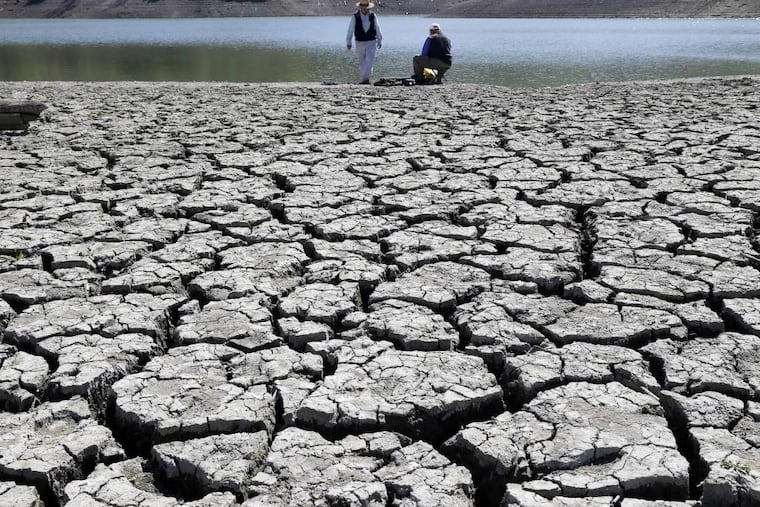Climate-change report sees wide impact in U.S.
A White House adviser said it was not too late to act. Critics saw more politics than science.

WASHINGTON - Global warming is rapidly turning America the beautiful into America the stormy, sneezy, and dangerous, according to a new federal scientific report. And those shining seas? Rising and costly, the report says.
Climate change's assorted harms "are expected to become increasingly disruptive across the nation throughout this century and beyond," the National Climate Assessment concluded Tuesday. The report, emphasizing that warming and all-too-wild weather are changing daily lives, used the phrase climate disruption as another way of saying global warming.
Still, it's not too late to prevent the worst of climate change, says the 840-page report, which the Obama administration is highlighting as it tries to jump-start often-stalled efforts to curb heat-trapping gases. Said White House science adviser John Holdren: "It's a good-news story about the many opportunities to take cost-effective actions to reduce the damage."
Release of the report, the third edition of a congressionally mandated study, gives President Obama an opportunity to ground his campaign against climate change in science and numbers.
Not everyone is persuaded. Some fossil-energy groups, conservative think tanks, and Republican senators assailed the report as "alarmist." Senate Republican leader Mitch McConnell of Kentucky said Obama was likely to "use the platform to renew his call for a national energy tax. And I'm sure he'll get loud cheers from liberal elites . . . who leave a giant carbon footprint and then lecture everybody else about low-flow toilets."
Since taking office, Obama has not proposed a specific tax on fossil-fuel emissions. He has proposed a system that caps emissions and allows companies to trade carbon pollution credits, but it failed in Congress.
The report - which is full of figures, charts, and other research-generated graphics - includes 3,096 footnotes to other, mostly peer-reviewed research. It was written by more than 250 scientists and government officials, starting in 2012. A draft was released in January 2013, but this version has been reviewed by more scientists, including twice by the National Academy of Sciences, which called it "a valuable resource."
Scientists called it the most detailed and U.S.-focused scientific report on global warming.
Even though the nation's average temperature has risen by as much as 1.9 degrees since record-keeping began in 1895, it's in the big, wild weather where the average person feels climate change the most, said coauthor Katharine Hayhoe, a Texas Tech University climate scientist. Extreme weather such as droughts, storms, and heat waves hit our pocketbooks and can be seen by citizens, she said.
The report says the intensity, frequency, and duration of the strongest Atlantic hurricanes have risen since the early 1980s, but it is still uncertain how much is from man-made warming. Sea level has risen 8 inches since 1880 and is projected to rise between 1 foot and 4 feet by 2100.
National Climatic Data Center director Tom Karl highlighted an increase in downpours. He pointed to last week's drenching, when parts of the Philadelphia area got six inches of rain in one day.